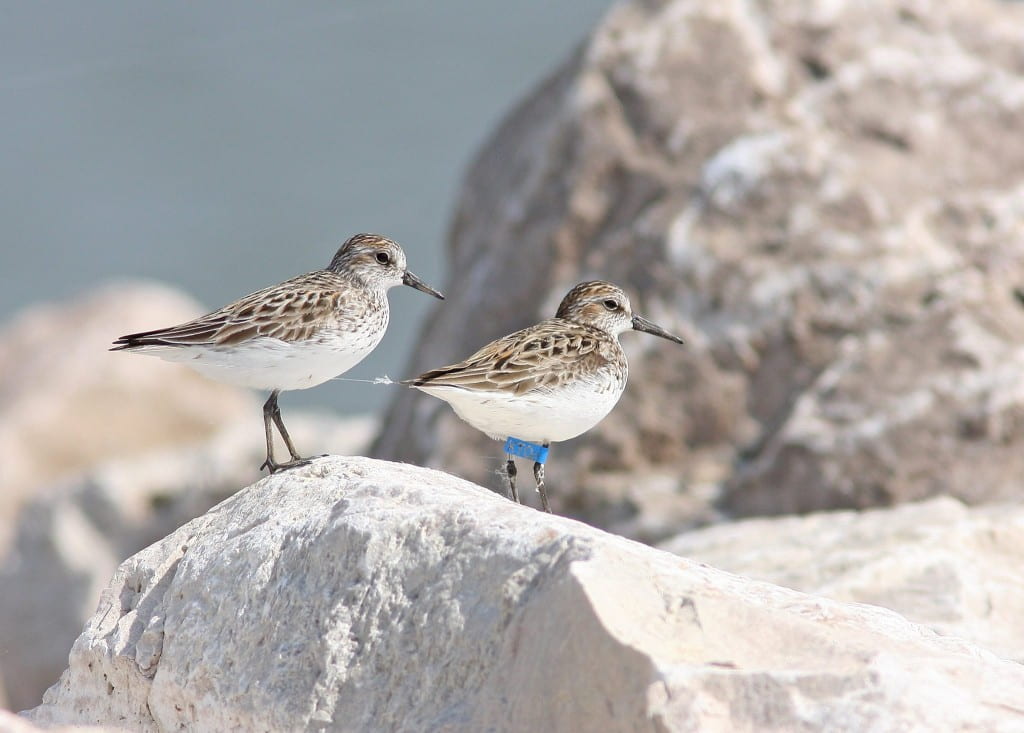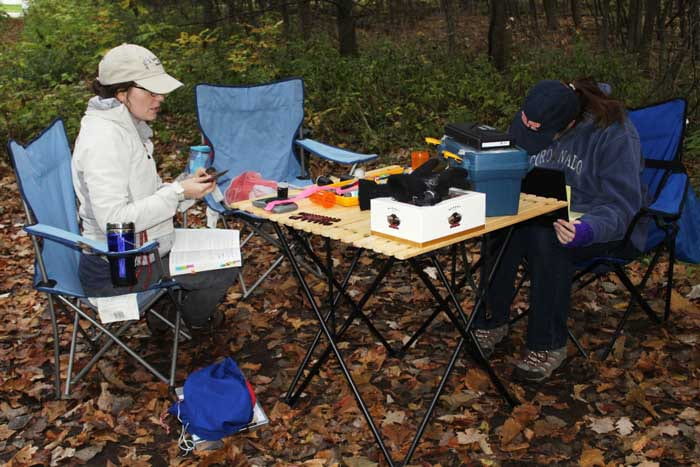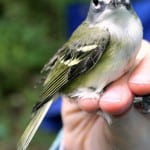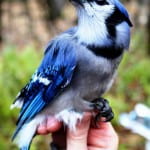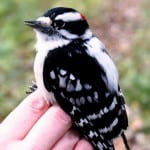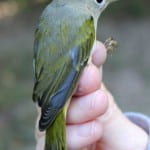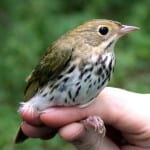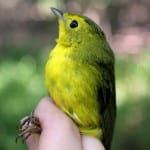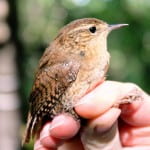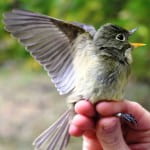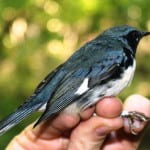Morgan Witte honored (again!) for sturgeon poster, gets ready to wrap up her time at ASC
In a few short weeks, the Aquatic Sciences Center (ASC) will bid a fond farewell to Morgan Witte, who has served as a graduate project assistant since fall 2018. Witte, who works mainly with the Wisconsin Water Library, will graduate in December with a master’s degree from UW-Madison’s Information School. Senior Special Librarian Anne Moser has been her primary mentor at the ASC.
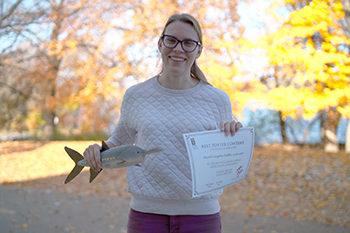
Morgan Witte holds a sturgeon decoy made by master carver George Schmidt and her most recent award. (Photo: Bonnie Willison)
Witte departs with two awards for her work on sturgeon-related projects that have extended the reach of “People of the Sturgeon: Wisconsin’s Love Affair with an Ancient Fish,” the well-loved book written by Kathy Kline, Fred Binkowski and Ronald Bruch. This has included cataloging and finding a permanent digital home for related audio files, as well as a well-attended exhibition on all things sturgeon in Fond du Lac. A poster Witte created about the sturgeon work was honored in the “Best Content” category at the recent yearly conference of the Wisconsin Library Association. The poster also won “Best Content” earlier this year at a conference specifically for academic librarians. (Learn more here.)
Said Moser, “Morgan has done an extraordinary job here at the ASC during her graduate program. These awards are well-deserved recognition of her innovation, hard work and contributions.”
Witte, who is graduating a semester early, has found her time at the Water Library eye opening. Robust, statewide outreach and educational programming are a major part of the library’s mission—something not typical for an academic library on a university campus.
The library collects materials one might not expect, such as children’s books and curriculum materials. It also develops STEM kits for kids that anyone in Wisconsin (like classroom teachers, librarians and parents) can borrow for free.
“Because of the materials this library collects,” said Witte, “I think that lends itself a lot to that outreach mission. I really hope to take that with me to wherever I work after this, because it’s so great to see not only the impact the library has on communities, but the impact those communities then have on the library. That influences your collection and what pieces of your collection you choose to highlight at what times of the year. And building those connections in a community can really strengthen the library, as well as the other way around.”
Her experience at the ASC has also given Witte exposure to its two programs, Wisconsin Sea Grant and the Water Resources Institute. “An inspiring part of this job is I’ve had a chance to learn from people who are doing amazing and innovative things in their respective fields.”
When Witte leaves the ASC, she’ll embark on an exciting new chapter of her life: relocating to Colorado to join her fiancé, who recently landed his dream job in Fort Collins as a wildlife geneticist. There, Witte—who is originally from Mount Horeb, Wisconsin—will job-hunt as she puts down roots in her new community.
Whether she lands in a public, academic or government library, she’s eager to apply her background in the sciences with the skills she honed at the Water Library, especially with regard to outreach and public programming.
She’s been a great asset to the ASC for the past year and half, and we wish her well in her future endeavors!
Blog – Wisconsin Sea Grant
https://www.seagrant.wisc.edu/blog/morgan-witte-honored/

